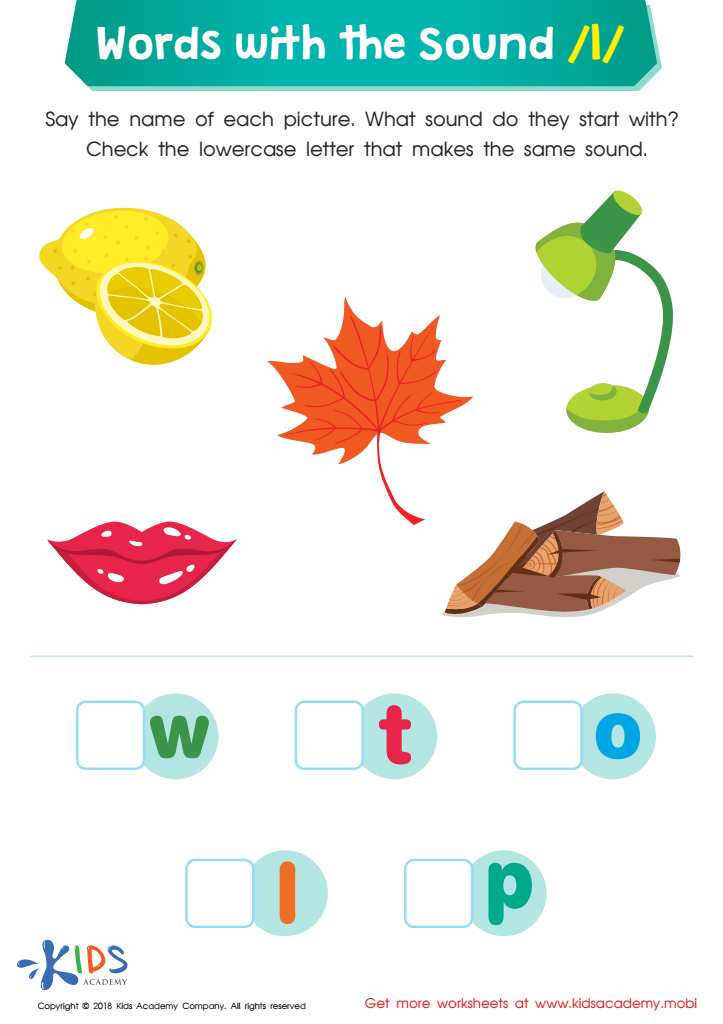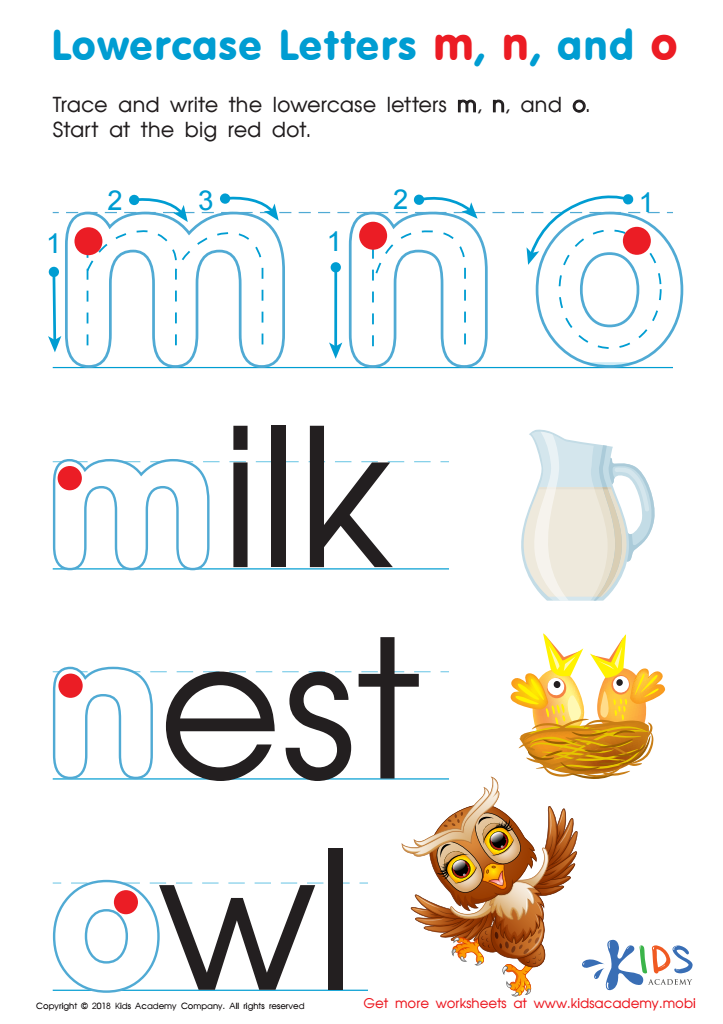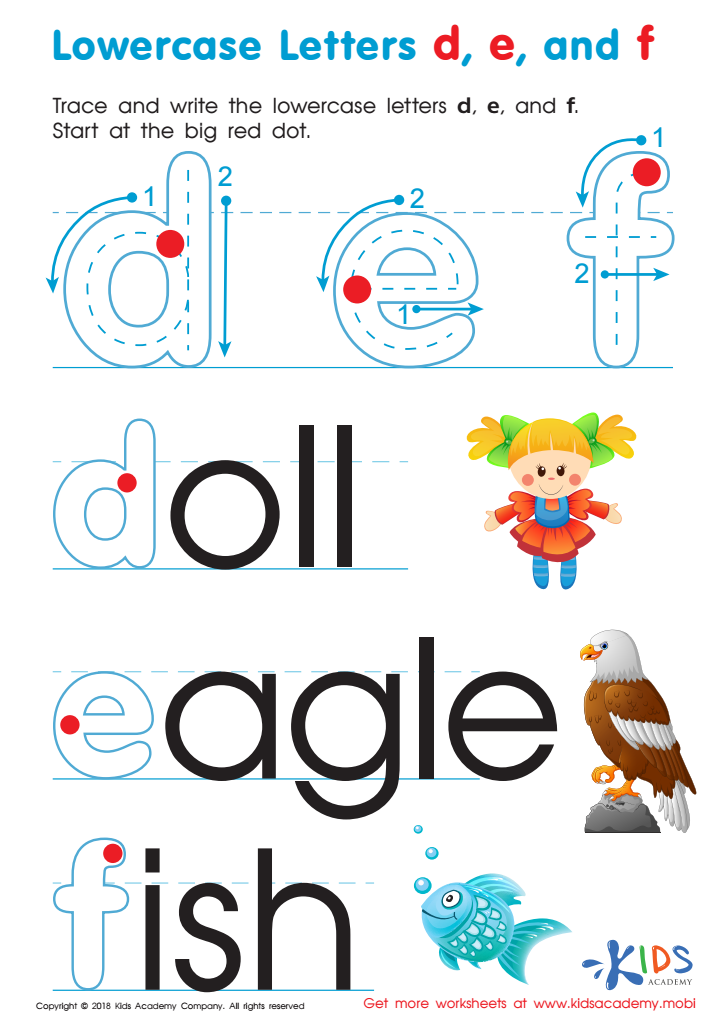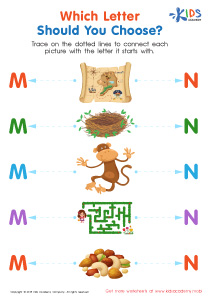Letter-sound association Lowercase/Small Letters Worksheets for Ages 6-8
3 filtered results
-
From - To
Explore our engaging Letter-Sound Association worksheets specifically designed for children aged 6-8. These lowercase/small letter activities are perfect for helping young learners connect letters with their corresponding sounds. Each worksheet features fun, interactive exercises that guide students through identifying, writing, and pronouncing letters, fostering phonemic awareness essential for reading and literacy skills. Our user-friendly format makes learning exciting, turning essential practice into enjoyable play. Whether used in the classroom or at home, these worksheets will empower your child to master letter-sound relationships and build a strong foundation for future reading success. Start your child's literacy journey today!


Words with Sound L Reading Worksheet


Lowercase Letters m n o Worksheet


Lowercase Letters d e f Worksheet
Understanding letter-sound associations for lowercase letters is fundamental in early literacy development, especially for children aged 6-8. This crucial skill aids in reading fluency, comprehension, and spelling. When children grasp the connection between letters and their corresponding sounds, they can decode unfamiliar words, enhancing their reading skills and boosting their confidence.
Caring about this aspect of literacy is important as it lays a strong foundation for future learning. Mastery of lowercase letters also fosters better engagement with written materials, fostering a love for reading. Teachers and parents play a vital role in supporting this learning journey. They can create phonemic awareness through interactive activities such as phonics games, songs, and storytelling, reinforcing the sounds associated with each letter.
Moreover, focusing on letter-sound associations can help identify and address reading difficulties early. By being proactive, educators and parents can prevent long-term literacy struggles, ensuring children develop strong reading habits. Ultimately, prioritizing this skill contributes not only to academic success but also to a child’s overall confidence and enjoyment in learning, setting the stage for lifelong literacy skills. Therefore, investing time and resources in nurturing this foundational skill is essential for children’s educational growth.
 Assign to My Students
Assign to My Students














